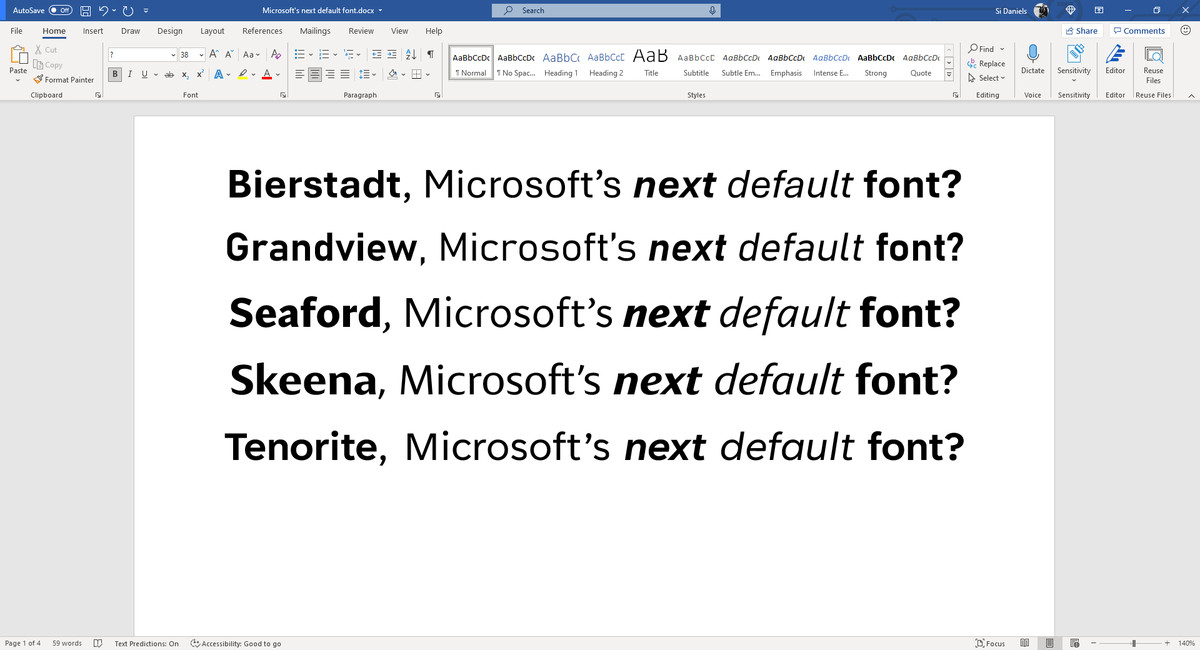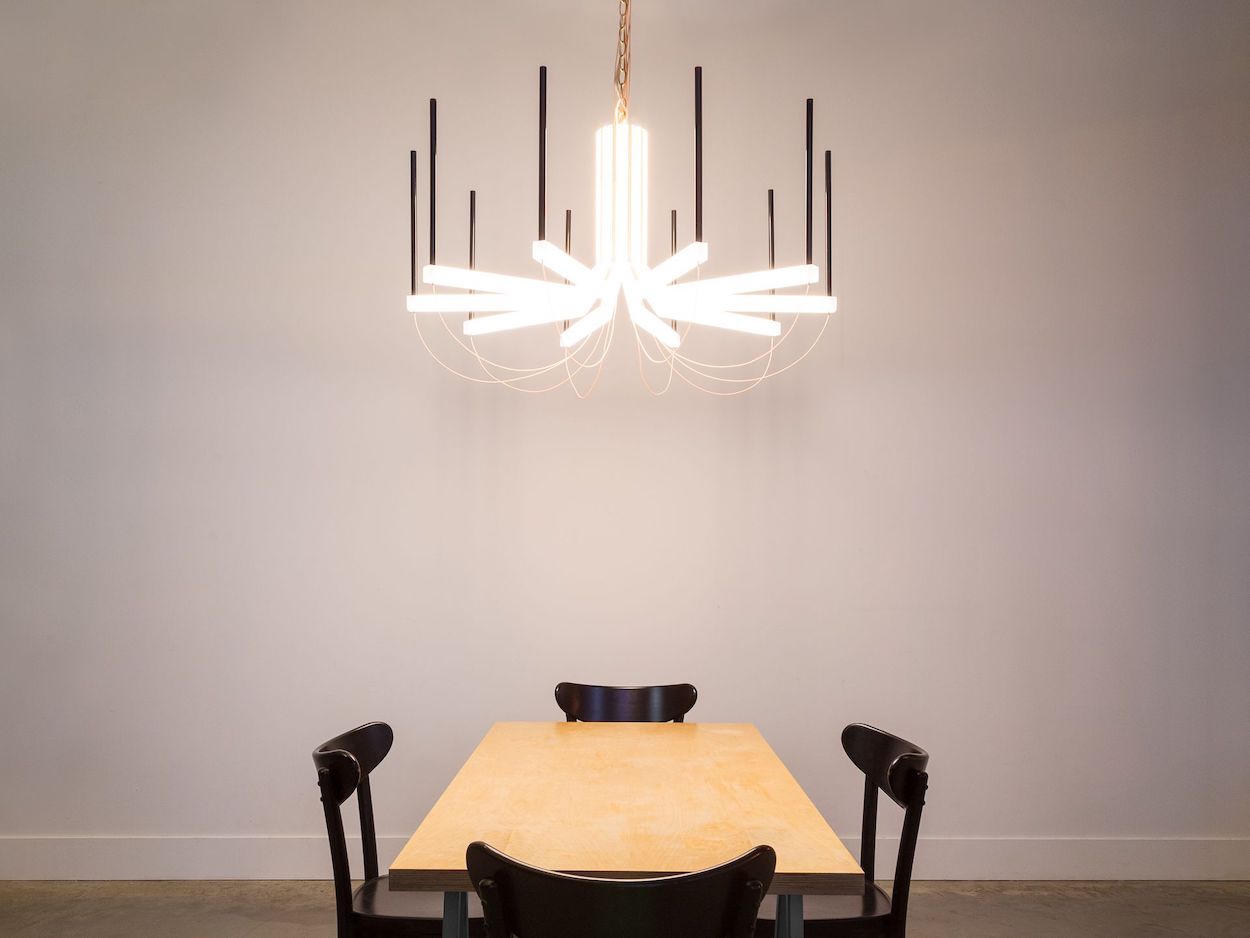The Design Dispatch offers expertly written and essential news from the design world crafted by our dedicated team. Think of it as your cheat sheet for the day in design delivered to your inbox before you’ve had your coffee. Subscribe now.
Have a news story our readers need to see? Submit it here.
Microsoft is switching up its default font by crowd-testing five new sans serif options.
After nearly 15 years, Microsoft will switch up its default font from the crisp Calibri to one of five sans serif options—Bierstadt, Grandview, Seaford, Skeena, or Tenorite—that debuted earlier this year. According to Microsoft, there’s nothing wrong with Calibri—they’re just ready for a fresh new look. “We’re not seeing customers turn against [Calibri], which does happen with fonts,” Simon Daniels, principal program manager at Microsoft Office Design, tells Wired. “I often think of this Roger Black quote, which says that fonts are basically like clothing for your ideas. So what we’re saying is that Calibri has gone out of fashion.” Microsoft will announce a new default font later this year after crowd-testing the five new options
The sculptor Sarah Oppenheimer will create a monumental site-specific work at UT Austin.
In July, the University of Texas at Austin will unveil a monumental sculpture by Sarah Oppenheimer, who’s perhaps best known for works that distort perceptions between space and architecture, as part of the institution’s Landmarks art program. The work, called C-010106, will sit on a footbridge between the school’s Gary Thomas Energy Building and the Engineering Education and Research Center. Renderings are under wraps until the debut, but Landmarks curator Andrée Bober describes the sculpture as “[comprising] two parallel planes of glass visible from the footbridge and below it. Within the two panes of glass, there are two reflective diagonal planes of glass that face the sky and the ground. The four planes meet at the bridge and flow dramatically through it.”
RISD will embark on an extensive $4 million renovation of the historic Metcalf Building.
Thanks to an anonymous donation, the Rhode Island School of Design will embark on an extensive $4 million renovation of the Jesse Metcalf Building. The 69,000-square-foot building, which once housed a textiles factory, is a central nexus for the campus—it’s home to nearly one-third of the school’s departments, including ceramics, furniture design, and textiles. “This extraordinary philanthropic investment will have a transformative impact on our students,” RISD president Rosanne Somerson said in a statement. “It accelerates a comprehensive reimagination of the studio and fabrication space where our artists and designers engage in the innovative thinking and critical making that are central to our educational model.”



